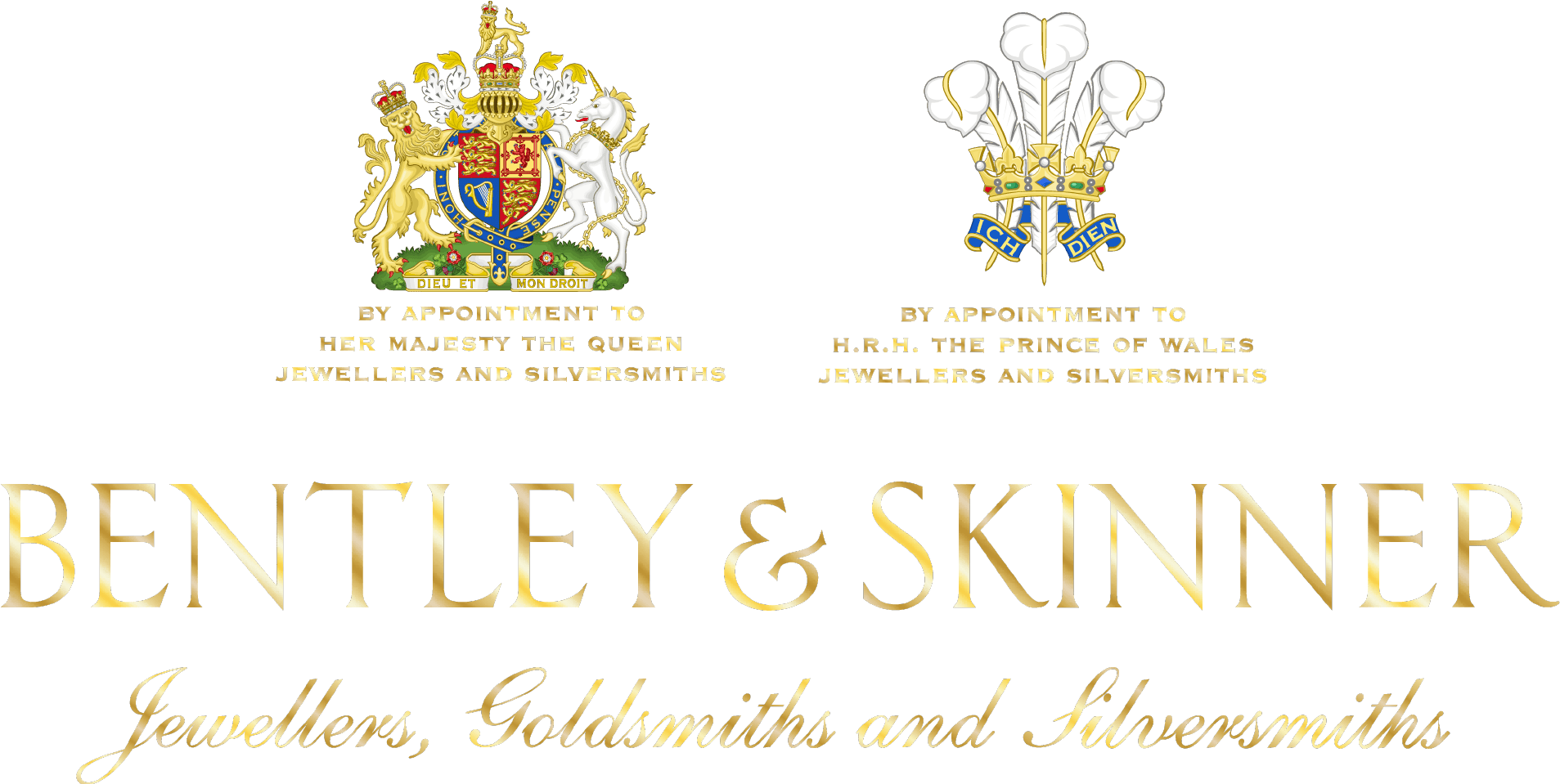


Loading...
Information
Traditionally in England, a man proposes to a woman with an engagement ring, that is worn on the fourth digit of the left hand, also known as ‘the ring finger’. In some countries, the right-handed ring finger is the prevalent custom: Spain, Greece, Austria, Hungary, Russia, Norway, Denmark and others.
In the world of jewellery, the word ‘solitaire’ is used to describe a ring, or another piece of jewellery, with one single diamond or gemstone that is set into a ring. Solitaire rings consist of two parts—a diamond and a setting.
Our buyer is available most weekday afternoons and there is no need to make an appointment. In the event of his absence we will be happy to take your pieces in and give you a receipt. Once your jewellery pieces have been assessed, we will call you and let you know of any offer. We are always happy to look at any jewellery you may wish to part exchange or sell in London, offering the highest prices along with immediate payment.
Yes, we offer a comprehensive range of valuation services at our London jewellery shop. Valuation services are carried out by our in-house team of registered valuers. Your jewellery pieces are fully covered by our insurance whilst they are with us.
Once your jewellery has been assessed, a written valuation report will be issued showing the current market valuation.
Although diamond cut and diamond shape can often be used interchangeably, they are actually different terms. The shape of a diamond is an external figure, the outline of a diamond, whilst the cut of a diamond refers to facets, symmetry, and reflective qualities of a diamond.
We offer a re-stringing service for pearls and beads; to help us ensure our pearl stringer is available when you visit our jewellery shop for pearl chokers to be fitted to the neck, we would ask you to make an appointment.
Our bespoke jewellery service offers you the possibility of creating your own custom-made jewellery to celebrate the most memorable occasions in your life. Our team of highly qualified specialists can help you design your own unique engagement ring or fashion a personalised gift for your loved one. Our past commissions have ranged from the simplest pair of pearl earrings through to Damien Hirst’s diamond skull ‘For the Love of God’.
We have our own on-site workshop where expert craftsmen undertake a full range of jewellery repairs and re-modelling to both antique and modern pieces. Offering a simple re-sizing of a diamond engagement ring through to creating an extension for a Victorian tiara, we take the greatest of care with every piece we receive.
Yes, we are delighted to make most of our jewellery available for hire.
All our jewellery measurements are in the British sizes. To help make your jewellery selection easier, please refer to our British, European, and American Jewellery Size Guide.
Yes, we can look at your jewellery and can part exchange if it is something we would be interested in.
We are near Burlington Arcade/Royal Academy. Nearest tube station is Green Park or Piccadilly.
We are open Monday to Saturday from 10am to 5:30pm.
Yes, we can do beautiful quality hand engraving or less expensive machine engraving and also will be able trace back the crest.
Yes, we undertake repairs on valuable pieces of silver.
The value of a diamond depends upon its rarity and is determined by 4Cs: Carat, Colour, Clarity and Cut.
Carat is simply a weight of a stone. Five carats equal one gram. Each 100 for the carat is expressed as a point.
The diamonds are normally colourless and may range from exceptional white through yellowish tints through to brown. The diamond will be more attractive and desirable if it is closer to exceptional white end of colour scale. Coloured diamonds exist in nature but are extremely rare and therefore valuable. Yellows, greens, blues, purples and reds may be found increasing in scarcity in the order of this list.
The clarity will vary from an apparently flawless stone to one in which inclusions are clearly visible. These inclusions are known as flaws, they could as both on the surface or inside the stone. External flaws are: scratches, fine lines, extra facets, blemishes, pits, chips, naturals, etc. Internal flaws are: feathers, beardings, cleavages, graining, knots, clouds, pinpoint inclusions, needles, etc.
Cut is the most important aspect of the stone as a perfectly symmetrical cut stone will give a lot more fire and brilliance, due to its capability to reflect light in the most wonderful way.
Absolutely, our jewellers would be very happy to look at your jewellery and to hear your ideas of how you wish to re-design it, also, if necessary, to provide their ideas to create something new.
It is compulsory to have all new jewellery hallmarked as well as those that were made after 1973 according to the Hallmarking Act 1973 and the weight of which exceeds the following: platinum 0.5 grams, gold 1.0 gram, palladium 1.0 gram and silver 7.78 grams.
Yes, we do free delivery for all jewellery that we sell.
Yes, we will be able to ship to the vast majority of countries all around the world, however we would still advise you to get in touch with us prior to making a purchase.
We would be happy to provide a condition report for your jewellery, however, you would need to leave it with us for a period of one week to four weeks depending how busy the jewellers and valuers are.
January — Garnet
February — Amethyst
March — Aquamarine
April — Diamond
May — Emerald
June — Pearl or Alexandrite
July — Ruby
August — Peridot
September — Sapphire
October — Tourmaline or Opal
November — Topaz or Citrine
December — Tanzanite, Zircon or Turquoise
The majority of our diamonds are certificated although smaller and less valuable diamonds are not. Diamonds in antique jewellery are only certificated when they have been removed from their setting.
You could send us an email at info@bentley-skinner.co.uk or fill in the form on the Order a jewellery catalogue page.
A Diamond/Gem Certificate is a document issued by a Gemmological Laboratory describing a particular stone. We recommend that important diamonds and gemstones be certified by internationally recognisable gemmological laboratories. The gemological certificate provides the information about the nature of the stone (natural diamond, sapphire, ruby, etc.), their individual quality grades, possible enhancement treatments, exact weights and/or country of origin (where applicable). Usually the certificate is provided only for loose stones because of the limitations imposed by the mounting.
The gemmological certificate is a permanent document. Once it is received for the loose stone you will not need to update it, unless the gemstone is chipped or is otherwise altered.
A valuation/appraisal report can be performed on a loose or a mounted stone, or a piece of jewellery. If the stone is not loose, the physical properties are estimated using various techniques.
The main purpose of the valuation report is to give an expert opinion of the current value of the piece in a chosen market.
All valuations provided in the UK include the stated value in pounds sterling, although the exchange rate between sterling and the US dollar should also be considered since bullion, diamonds and other gemstones are traded worldwide in US dollars. Fluctuations in this rate have an immediate effect on these raw materials. Therefore, it is recommended that your jewellery is re-examined for appraisal every three to five years.
Yes, we will be happy to work on a new design for you, and our professional jewellers can give new life to your family jewellery.
We have a selection of sample signet rings of different shapes and sizes for you to choose from. Once you have chosen the style we can provide a service for family crest seal engraving and initial hand engraving. We also have all signet rings for sale.
It is possible to design your own crest. Alternatively, we can introduce you to the Royal College of Heralds who can research the crest associated with your family name. One of our team will be able to assist you in the design process.
Our team and workshop will be able to work with you to design and remodel jewellery to your exact specifications.
Most of the time the rings can be resized but in some cases the design or the quality of the ring doesn’t allow to do so. The best thing to do is to come in our shop and one of the jeweller will advise you on how to proceed.
Most of our stock ready to be sold is on our website but some of the new pieces added to our collection will be only shown a few days later.
We are specialised in Antique jewellery but we also have a wide range of new pieces including items made in our workshop. Our workshop is happy to make a bespoke jewellery to your own specifications.
It is always advised to wipe your jewellery with a soft non-abrasive cotton cloth or chamois after wearing. Occasionally you can use mild soapy water and a gentle soft brushing, only for those pieces with open backs and non-porous gemstones. Allow the jewellery to dry before storing. We can offer a same-day thorough cleaning service for your most special jewellery items.
Traditionally pearls and gemstone beads are strung in silk thread, which does wear in time and depending how often they are worn, hence every couple of years would be recommended to seek an appointment for our re-stringing service. Always store your jewellery in the box or pouchettes, separating them to prevent abrasion. Please remember that diamond can scratch another one.
In order to prevent any damage it is advisable to avoid expose to excessive heat or dryness, to remove your jewellery before applying perfume and cosmetics and chemical cleaners; especially those containing ammonia or bleach. Always store your jewellery in a box or/and pouchettes, separating them to prevent abrasion from each other and softer gems such as pearls.